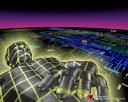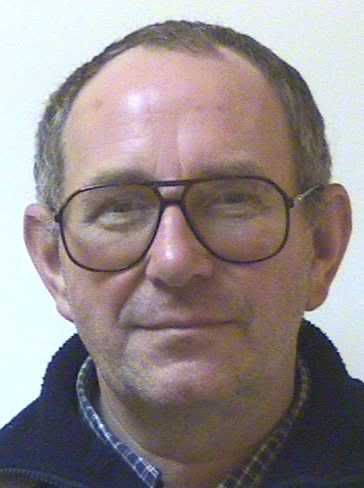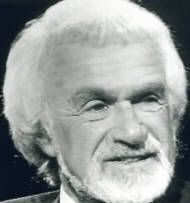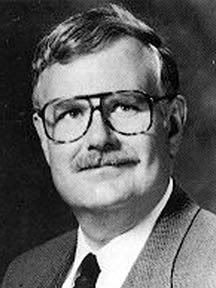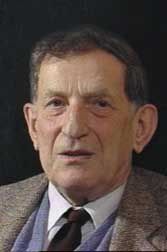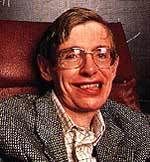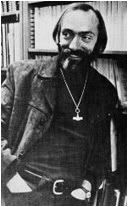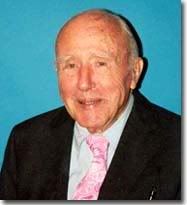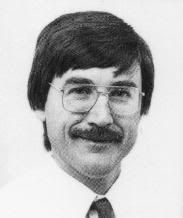Take a leap into hyperspace
Haiko Lietz
EVERY year, the American Institute of Aeronautics and Astronautics awards prizes for the best papers presented at its annual conference. Last year's winner in the nuclear and future flight category went to a paper calling for experimental tests of an astonishing new type of engine. According to the paper, this hyperdrive motor would propel a craft through another dimension at enormous speeds. It could leave Earth at lunchtime and get to the moon in time for dinner. There's just one catch: the idea relies on an obscure and largely unrecognised kind of physics. Can they possibly be serious?
The AIAA is certainly not embarrassed. What's more, the US military has begun to cast its eyes over the hyperdrive concept, and a space propulsion researcher at the US Department of Energy's Sandia National Laboratories has said he would be interested in putting the idea to the test. And despite the bafflement of most physicists at the theory that supposedly underpins it, Pavlos Mikellides, an aerospace engineer at the Arizona State University in Tempe who reviewed the winning paper, stands by the committee's choice. "Even though such features have been explored before, this particular approach is quite unique," he says.
Unique it certainly is. If the experiment gets the go-ahead and works, it could reveal new interactions between the fundamental forces of nature that would change the future of space travel. Forget spending six months or more holed up in a rocket on the way to Mars, a round trip on the hyperdrive could take as little as 5 hours. All our worries about astronauts' muscles wasting away or their DNA being irreparably damaged by cosmic radiation would disappear overnight. What's more the device would put travel to the stars within reach for the first time. But can the hyperdrive really get off the ground?
“A hyperdrive craft would put the stars within reach for the first time”
The answer to that question hinges on the work of a little-known German physicist. Burkhard Heim began to explore the hyperdrive propulsion concept in the 1950s as a spin-off from his attempts to heal the biggest divide in physics: the rift between quantum mechanics and Einstein's general theory of relativity.
Quantum theory describes the realm of the very small - atoms, electrons and elementary particles - while general relativity deals with gravity. The two theories are immensely successful in their separate spheres. The clash arises when it comes to describing the basic structure of space. In general relativity, space-time is an active, malleable fabric. It has four dimensions - three of space and one of time - that deform when masses are placed in them. In Einstein's formulation, the force of gravity is a result of the deformation of these dimensions. Quantum theory, on the other hand, demands that space is a fixed and passive stage, something simply there for particles to exist on. It also suggests that space itself must somehow be made up of discrete, quantum elements.
In the early 1950s, Heim began to rewrite the equations of general relativity in a quantum framework. He drew on Einstein's idea that the gravitational force emerges from the dimensions of space and time, but suggested that all fundamental forces, including electromagnetism, might emerge from a new, different set of dimensions. Originally he had four extra dimensions, but he discarded two of them believing that they did not produce any forces, and settled for adding a new two-dimensional "sub-space" onto Einstein's four-dimensional space-time.
In Heim's six-dimensional world, the forces of gravity and electromagnetism are coupled together. Even in our familiar four-dimensional world, we can see a link between the two forces through the behaviour of fundamental particles such as the electron. An electron has both mass and charge. When an electron falls under the pull of gravity its moving electric charge creates a magnetic field. And if you use an electromagnetic field to accelerate an electron you move the gravitational field associated with its mass. But in the four dimensions we know, you cannot change the strength of gravity simply by cranking up the electromagnetic field.
In Heim's view of space and time, this limitation disappears. He claimed it is possible to convert electromagnetic energy into gravitational and back again, and speculated that a rotating magnetic field could reduce the influence of gravity on a spacecraft enough for it to take off.
When he presented his idea in public in 1957, he became an instant celebrity. Wernher von Braun, the German engineer who at the time was leading the Saturn rocket programme that later launched astronauts to the moon, approached Heim about his work and asked whether the expensive Saturn rockets were worthwhile. And in a letter in 1964, the German relativity theorist Pascual Jordan, who had worked with the distinguished physicists Max Born and Werner Heisenberg and was a member of the Nobel committee, told Heim that his plan was so important "that its successful experimental treatment would without doubt make the researcher a candidate for the Nobel prize".
But all this attention only led Heim to retreat from the public eye. This was partly because of his severe multiple disabilities, caused by a lab accident when he was still in his teens. But Heim was also reluctant to disclose his theory without an experiment to prove it. He never learned English because he did not want his work to leave the country. As a result, very few people knew about his work and no one came up with the necessary research funding. In 1958 the aerospace company Bölkow did offer some money, but not enough to do the proposed experiment.
While Heim waited for more money to come in, the company's director, Ludwig Bölkow, encouraged him to develop his theory further. Heim took his advice, and one of the results was a theorem that led to a series of formulae for calculating the masses of the fundamental particles - something conventional theories have conspicuously failed to achieve. He outlined this work in 1977 in the Max Planck Institute's journal Zeitschrift für Naturforschung, his only peer-reviewed paper. In an abstruse way that few physicists even claim to understand, the formulae work out a particle's mass starting from physical characteristics, such as its charge and angular momentum.
Yet the theorem has proved surprisingly powerful. The standard model of physics, which is generally accepted as the best available theory of elementary particles, is incapable of predicting a particle's mass. Even the accepted means of estimating mass theoretically, known as lattice quantum chromodynamics, only gets to between 1 and 10 per cent of the experimental values.
Gravity reduction
But in 1982, when researchers at the German Electron Synchrotron (DESY) in Hamburg implemented Heim's mass theorem in a computer program, it predicted masses of fundamental particles that matched the measured values to within the accuracy of experimental error. If they are let down by anything, it is the precision to which we know the values of the fundamental constants. Two years after Heim's death in 2001, his long-term collaborator Illobrand von Ludwiger calculated the mass formula using a more accurate gravitational constant. "The masses came out even more precise," he says.
After publishing the mass formulae, Heim never really looked at hyperspace propulsion again. Instead, in response to requests for more information about the theory behind the mass predictions, he spent all his time detailing his ideas in three books published in German. It was only in 1980, when the first of his books came to the attention of a retired Austrian patent officer called Walter Dröscher, that the hyperspace propulsion idea came back to life. Dröscher looked again at Heim's ideas and produced an "extended" version, resurrecting the dimensions that Heim originally discarded. The result is "Heim-Dröscher space", a mathematical description of an eight-dimensional universe.
From this, Dröscher claims, you can derive the four forces known in physics: the gravitational and electromagnetic forces, and the strong and weak nuclear forces. But there's more to it than that. "If Heim's picture is to make sense," Dröscher says, "we are forced to postulate two more fundamental forces." These are, Dröscher claims, related to the familiar gravitational force: one is a repulsive anti-gravity similar to the dark energy that appears to be causing the universe's expansion to accelerate. And the other might be used to accelerate a spacecraft without any rocket fuel.
This force is a result of the interaction of Heim's fifth and sixth dimensions and the extra dimensions that Dröscher introduced. It produces pairs of "gravitophotons", particles that mediate the interconversion of electromagnetic and gravitational energy. Dröscher teamed up with Jochem Häuser, a physicist and professor of computer science at the University of Applied Sciences in Salzgitter, Germany, to turn the theoretical framework into a proposal for an experimental test. The paper they produced, "Guidelines for a space propulsion device based on Heim's quantum theory", is what won the AIAA's award last year.
Claims of the possibility of "gravity reduction" or "anti-gravity" induced by magnetic fields have been investigated by NASA before (New Scientist, 12 January 2002, p 24). But this one, Dröscher insists, is different. "Our theory is not about anti-gravity. It's about completely new fields with new properties," he says. And he and Häuser have suggested an experiment to prove it.
This will require a huge rotating ring placed above a superconducting coil to create an intense magnetic field. With a large enough current in the coil, and a large enough magnetic field, Dröscher claims the electromagnetic force can reduce the gravitational pull on the ring to the point where it floats free. Dröscher and Häuser say that to completely counter Earth's pull on a 150-tonne spacecraft a magnetic field of around 25 tesla would be needed. While that's 500,000 times the strength of Earth's magnetic field, pulsed magnets briefly reach field strengths up to 80 tesla. And Dröscher and Häuser go further. With a faster-spinning ring and an even stronger magnetic field, gravitophotons would interact with conventional gravity to produce a repulsive anti-gravity force, they suggest.
“A spinning ring and a strong magnetic field could produce a repulsive anti-gravity force”
Dröscher is hazy about the details, but he suggests that a spacecraft fitted with a coil and ring could be propelled into a multidimensional hyperspace. Here the constants of nature could be different, and even the speed of light could be several times faster than we experience. If this happens, it would be possible to reach Mars in less than 3 hours and a star 11 light years away in only 80 days, Dröscher and Häuser say.
So is this all fanciful nonsense, or a revolution in the making? The majority of physicists have never heard of Heim theory, and most of those contacted by New Scientist said they couldn't make sense of Dröscher and Häuser's description of the theory behind their proposed experiment. Following Heim theory is hard work even without Dröscher's extension, says Markus Pössel, a theoretical physicist at the Max Planck Institute for Gravitational Physics in Potsdam, Germany. Several years ago, while an undergraduate at the University of Hamburg, he took a careful look at Heim theory. He says he finds it "largely incomprehensible", and difficult to tie in with today's physics. "What is needed is a step-by-step introduction, beginning at modern physical concepts," he says.
The general consensus seems to be that Dröscher and Häuser's theory is incomplete at best, and certainly extremely difficult to follow. And it has not passed any normal form of peer review, a fact that surprised the AIAA prize reviewers when they made their decision. "It seemed to be quite developed and ready for such publication," Mikellides told New Scientist.
At the moment, the main reason for taking the proposal seriously must be Heim theory's uncannily successful prediction of particle masses. Maybe, just maybe, Heim theory really does have something to contribute to modern physics. "As far as I understand it, Heim theory is ingenious," says Hans Theodor Auerbach, a theoretical physicist at the Swiss Federal Institute of Technology in Zurich who worked with Heim. "I think that physics will take this direction in the future."
It may be a long while before we find out if he's right. In its present design, Dröscher and Häuser's experiment requires a magnetic coil several metres in diameter capable of sustaining an enormous current density. Most engineers say that this is not feasible with existing materials and technology, but Roger Lenard, a space propulsion researcher at Sandia National Laboratories in New Mexico thinks it might just be possible. Sandia runs an X-ray generator known as the Z machine which "could probably generate the necessary field intensities and gradients".
For now, though, Lenard considers the theory too shaky to justify the use of the Z machine. "I would be very interested in getting Sandia interested if we could get a more perspicacious introduction to the mathematics behind the proposed experiment," he says. "Even if the results are negative, that, in my mind, is a successful experiment."
From issue 2533 of New Scientist magazine, 05 January 2006, page 24
Who was Burkhard Heim?
Burkhard Heim had a remarkable life. Born in 1925 in Potsdam, Germany, he decided at the age of 6 that he wanted to become a rocket scientist. He disguised his designs in code so that no one could discover his secret. And in the cellar of his parents' house, he experimented with high explosives. But this was to lead to disaster.
Towards the end of the second world war, he worked as an explosives developer, and an accident in 1944 in which a device exploded in his hands left him permanently disabled. He lost both his forearms, along with 90 per cent of his hearing and eyesight.
After the war, he attended university in Göttingen to study physics. The idea of propelling a spacecraft using quantum mechanics rather than rocket fuel led him to study general relativity and quantum mechanics. It took an enormous effort. From 1948, his father and wife replaced his senses, spending hours reading papers and transcribing his calculations onto paper. And he developed a photographic memory.
Supporters of Heim theory claim that it is a panacea for the troubles in modern physics. They say it unites quantum mechanics and general relativity, can predict the masses of the building blocks of matter from first principles, and can even explain the state of the universe 13.7 billion years ago.
|


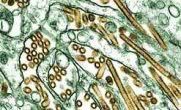 October 24, 2007 (Computerworld) If a pandemic strikes the U.S., it will kill about 1.7 million people, hospitalize 9 million, exhaust antiviral medications and reduce basic food supplies, according to a planning scenario developed by financial service firms preparing for such a catastrophe.
October 24, 2007 (Computerworld) If a pandemic strikes the U.S., it will kill about 1.7 million people, hospitalize 9 million, exhaust antiviral medications and reduce basic food supplies, according to a planning scenario developed by financial service firms preparing for such a catastrophe.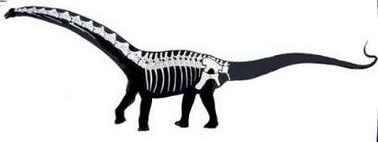
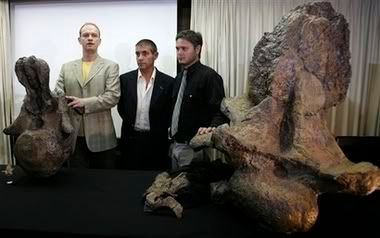

 A collision 160 million years ago of two asteroids orbiting between Mars and Jupiter sent many big rock chunks hurtling toward Earth, including the one that zapped the dinosaurs, scientists said on Wednesday.
A collision 160 million years ago of two asteroids orbiting between Mars and Jupiter sent many big rock chunks hurtling toward Earth, including the one that zapped the dinosaurs, scientists said on Wednesday. Astronomers have long believed that some sort of asteroid or comet impact killed the dinosaurs about 65 million years ago. Now they say they have likely identified what the object was—or at least, which family it came from.
Astronomers have long believed that some sort of asteroid or comet impact killed the dinosaurs about 65 million years ago. Now they say they have likely identified what the object was—or at least, which family it came from.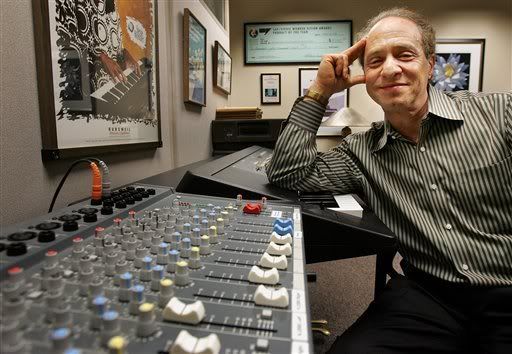
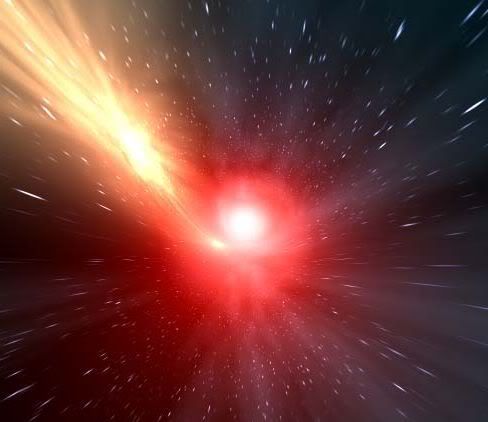

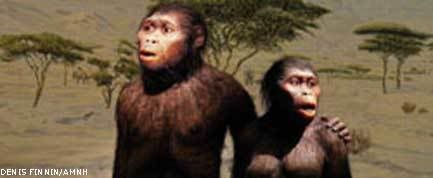
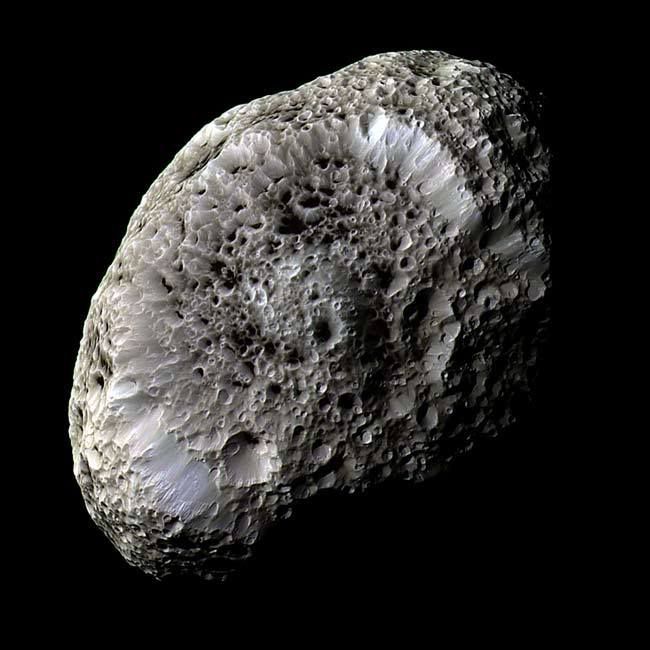
 When Steven Hawks is tempted by ice cream bars, M&Ms and toffee-covered almonds at the grocery store, he doesn't pass them by. He fills up his shopping cart.
When Steven Hawks is tempted by ice cream bars, M&Ms and toffee-covered almonds at the grocery store, he doesn't pass them by. He fills up his shopping cart. Mice gorging on high-calorie, high-fat diets for two weeks stayed slender, thanks to an "anti-obesity" protein injected into their brains, Italian researchers report.
Mice gorging on high-calorie, high-fat diets for two weeks stayed slender, thanks to an "anti-obesity" protein injected into their brains, Italian researchers report.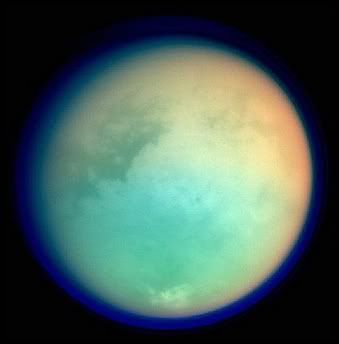
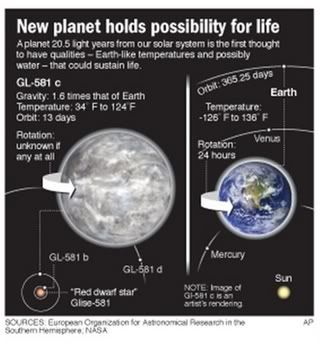

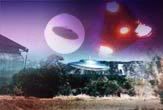 For decades now, eyes and sky have met to witness the buzzing of our world by Unidentified Flying Objects, termed UFOs or simply flying saucers. Extraterrestrials have come a long way to purportedly share the friendly skies with us.
For decades now, eyes and sky have met to witness the buzzing of our world by Unidentified Flying Objects, termed UFOs or simply flying saucers. Extraterrestrials have come a long way to purportedly share the friendly skies with us.
